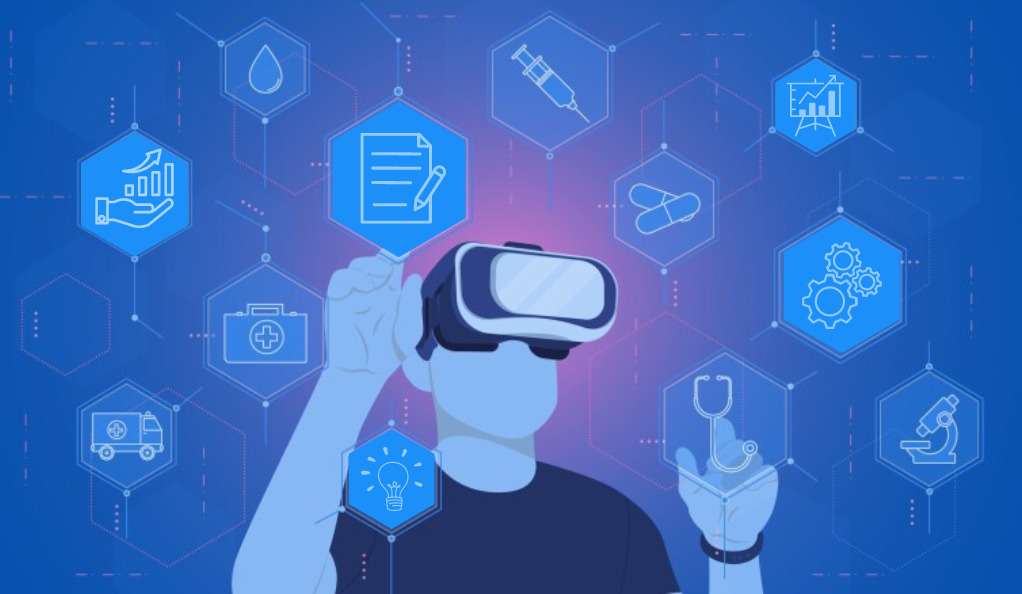Virtual Reality Exhibitions: The Future of Art Galleries
In the ever-evolving world of art, the boundaries between the tangible and the virtual are becoming increasingly blurred. With the rise of digital art and the rapid advancements in technology, the traditional art gallery is undergoing a transformation. Enter the realm of Virtual Reality (VR) exhibitions, a space where art meets technology in the most immersive way possible.
The Evolution of Art Galleries
For centuries, art galleries have been sanctuaries for art lovers. They offer a quiet space to contemplate, appreciate, and connect with artworks. These spaces have been the cornerstone of cultural exchange, where artists showcase their work and audiences engage with it. However, with the digital age, there’s been a shift. Digital art, which encompasses everything from digital paintings to 3D sculptures, has paved the way for a new kind of exhibition space: the virtual gallery. This shift not only changes the way art is presented but also how it’s consumed, making art more accessible to a global audience.
Why Virtual Reality?

Virtual Reality offers an unparalleled experience. Unlike viewing a painting on a wall or a sculpture on a pedestal, VR allows the viewer to step into the artwork, to experience it from every angle, and even interact with it. This level of immersion is something that traditional galleries simply cannot offer. Moreover, VR provides artists with a new canvas, one that is boundless and offers infinite possibilities.
- Accessibility
One of the most significant advantages of VR exhibitions is their accessibility. Anyone with a VR headset, regardless of their location, can visit a virtual gallery. This opens up the world of art to a much broader audience, breaking down geographical barriers. It democratizes art, allowing people from different backgrounds and locations to experience world-class exhibitions without the need to travel. - Interactivity
VR exhibitions can be interactive. Viewers can engage with the artwork, change perspectives, and even alter the environment in which the art is displayed. This creates a dynamic experience, tailored to each individual. It’s not just about viewing art; it’s about experiencing it in a multi-dimensional way. - Limitless Possibilities
In the virtual world, there are no physical constraints. This means that artworks can be displayed in imaginative and limitless spaces – from floating platforms in the sky to underwater galleries. Artists are no longer bound by the limitations of physical space, allowing for grander and more ambitious installations.
The Experience of Virtual Art Galleries
Visiting a VR art gallery is a unique experience. Upon donning a VR headset, viewers are transported to a different world. The environment can be as realistic or fantastical as the curator desires. Ambient sounds can enhance the atmosphere, and the art can be displayed in innovative ways that challenge our perceptions. Each visit can be a new experience, with dynamic elements that change based on viewer interaction or even real-world events.

Moreover, artists can create pieces specifically for the virtual realm, taking advantage of the medium’s unique properties. Imagine stepping into a painting, walking around a digital sculpture, or even interacting with a piece that responds to your movements. This dynamic relationship between the viewer and the artwork creates a deeper level of engagement and understanding.
Challenges and Considerations
While the potential of VR exhibitions is vast, there are challenges to consider. The technology, though advanced, is still in its nascent stages and has room for improvement.
- Technical Limitations
Not everyone has access to high-quality VR headsets, which can limit the audience. Moreover, the quality of the VR experience can vary based on the hardware and software used, potentially affecting the viewer’s immersion. - Authenticity
Some art purists argue that virtual exhibitions can never replace the experience of viewing art in person. The tactile nature, the play of light on a canvas, and the physical presence of an artwork are aspects that VR cannot replicate. There’s a certain magic in standing before an original piece, feeling its history and energy, which a virtual representation might not capture. - Overwhelming Experience
For some, the immersive nature of VR can be overwhelming or disorienting. It’s a departure from the traditional way of experiencing art, and not everyone might be comfortable with this shift.
Conclusion
The fusion of art and technology has always been a testament to human innovation. Virtual Reality exhibitions are the latest chapter in this ongoing story. As we stand on the cusp of a new era in art appreciation and exhibition, it’s clear that the traditional gallery experience is expanding into new, exciting, and more inclusive realms. While the tactile allure of physical art will always have its place, the immersive and boundless world of VR offers a fresh perspective, challenging artists and audiences alike to rethink the boundaries of creativity. As we move forward, it’s essential to embrace these new mediums while cherishing the traditional forms that have shaped our cultural history.
FAQs
A Virtual Reality exhibition is a digital art gallery that viewers can experience using VR headsets. It allows for a more immersive experience, letting viewers step into and interact with the artwork in ways not possible in traditional galleries.
Yes, you would need a VR headset to fully experience a virtual art gallery. However, as technology advances, there are more affordable and accessible options available in the market.
In a VR gallery, art can be displayed in limitless ways without the constraints of physical space. This means artworks can be in vast, imaginative settings, be interacted with, and even be experienced in 360 degrees.
While VR exhibitions offer unique experiences, they also come with challenges. Some people might find the experience overwhelming or disorienting. Additionally, the tactile and physical nuances of viewing art in person can’t be fully replicated in a virtual space.
Absolutely! Artists can craft pieces tailored for the virtual realm, leveraging the medium’s unique properties. This can range from interactive pieces that respond to viewers’ movements to artworks that exist solely in a digital space.
